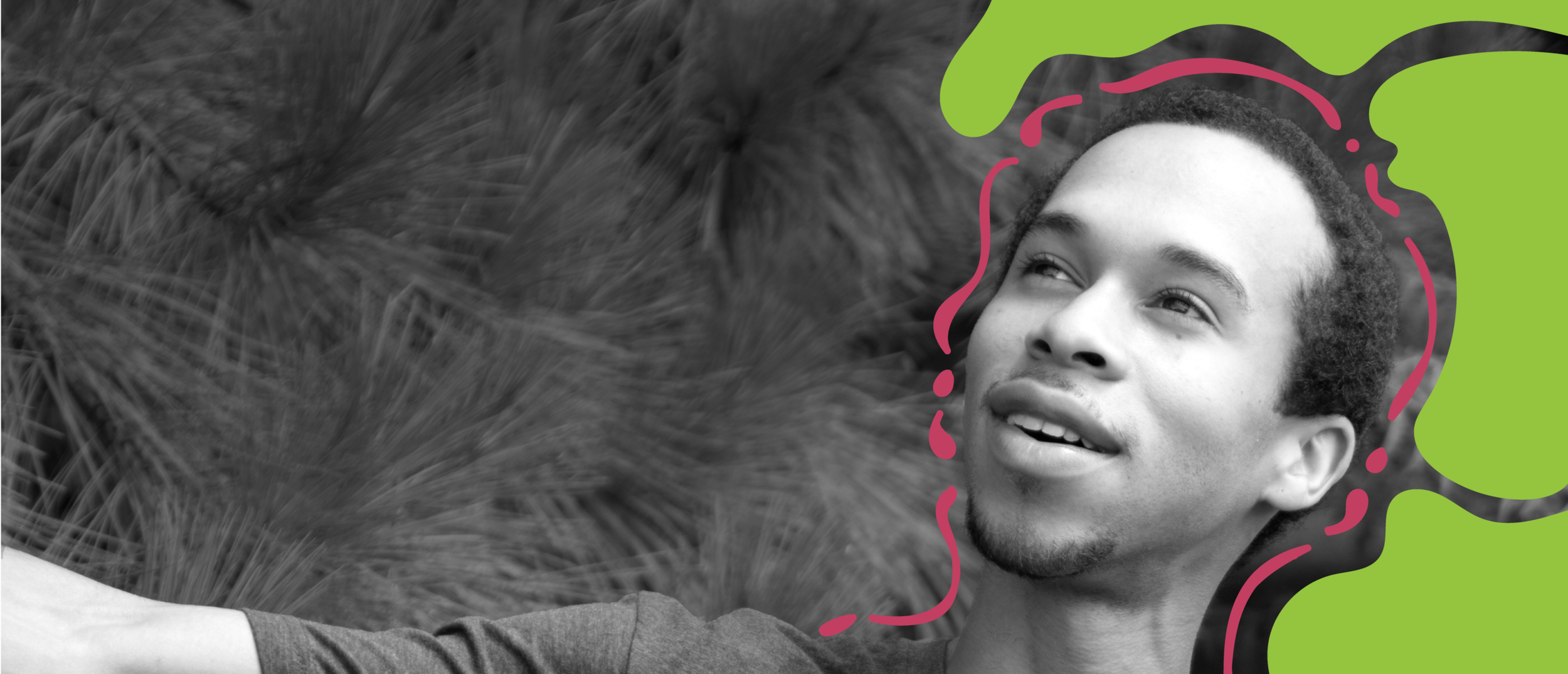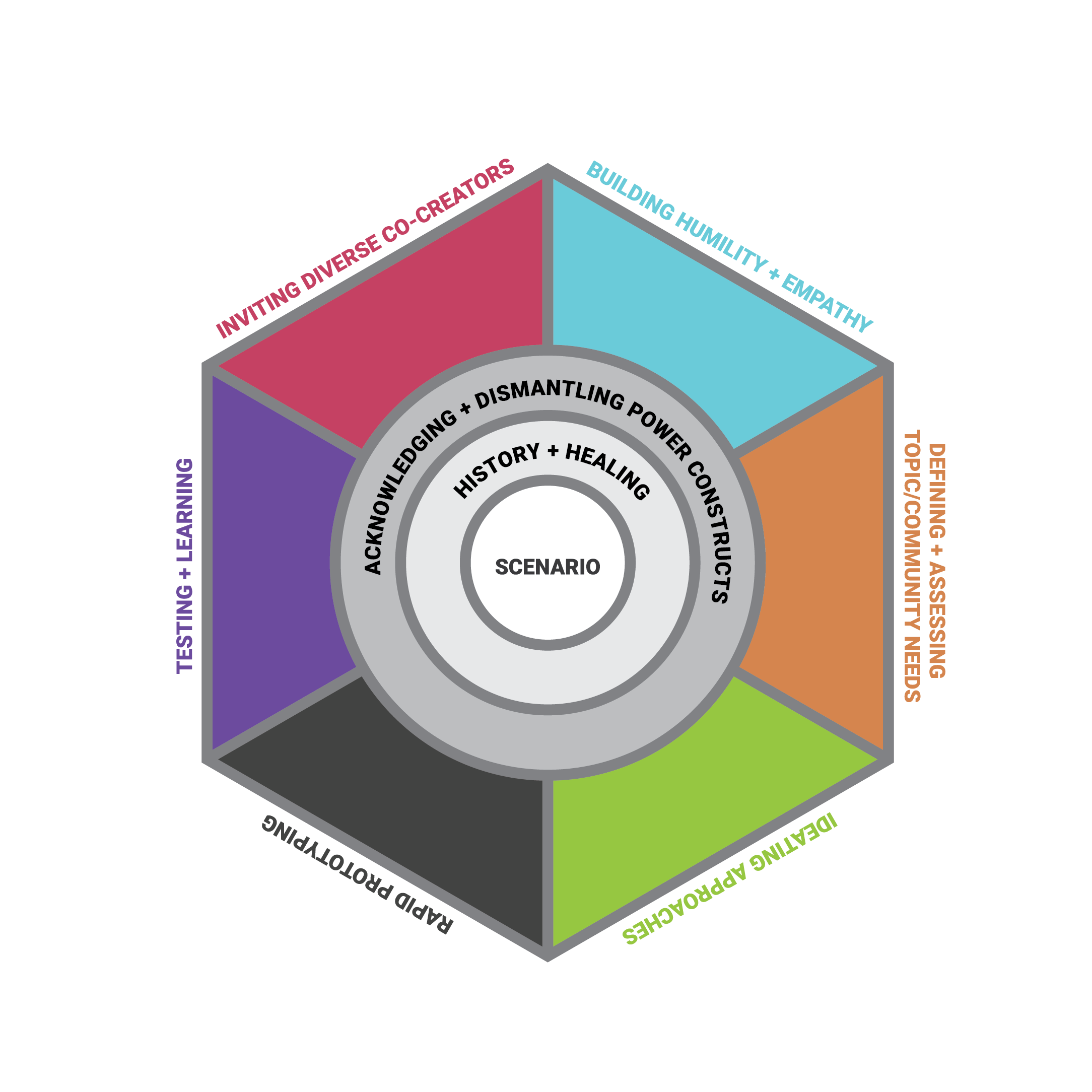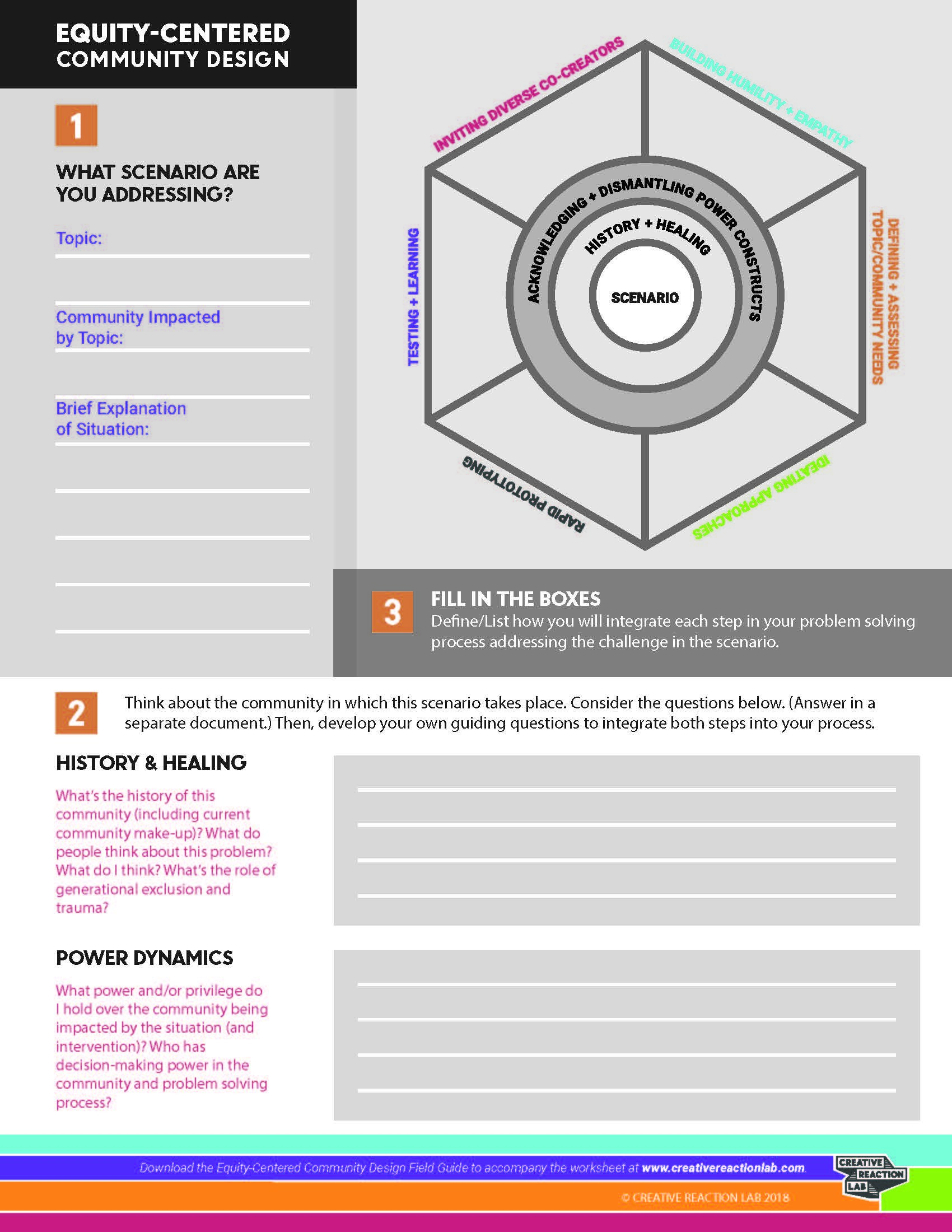
Our Approach
A Method for Co-Creating Equitable Outcomes
Our Approach.
Equity-Centered Community Design (ECCD)™️
Equity-Centered Community Design™️, created by Creative Reaction Lab, is a unique creative problem solving process based on equity, humility-building, integrating history and healing practices, addressing power dynamics, and co-creating with the community. This design process focuses on a community’s culture and needs so that they can gain tools to dismantle systemic oppression and create a future with equity for all. Creative Reaction Lab’s goal is to share equity-centered community design to achieve sustained community health, economic opportunities, and social and cultural solidarity.
“I’ve seen other frameworks that call for diverse co-creators, ideation, rapid prototyping, etc., but I think that those can only be so effective if the individuals in a group do not first have a deep understanding and awareness of the power and privilege that various aspects of their identity might have within the dynamics of the group.” -Equity by Design Immersive Series Participant
The Equity-Centered Community Design (ECCD)™️ framework is for personal or educational use which is: (1) not-for-profit; (2) not conducted or funded by an entity engaged in the commercial use or exploitation of works similar to Creative Reaction Lab; and (3) not intended to produce works for commercial use.

Download or Purchase a copy of the Equity-Centered Community Design™️ Field Guide for help in applying ECCD to your practices.
Breaking Down Equity-Centered Community Design™️
Inviting Diverse Co-Creators.
Inviting diverse co-creators is about bringing together people with different perspectives, values, experiences, and expertise to a design scenario. Here, we critically examine who is invited to decision-making tables, and we make sure community members most impacted by the design scenario are not only invited, but included and heard.
Building Humility & Empathy.
Building humility and empathy is the step in which we examine how our own identities, values, biases, assumptions, and relationships to power and privilege impact how we engage with ourselves, each others, and the communities we work with. It’s not enough to build empathy - we also have to acknowledge what we know we don’t know (and what we don’t know, we don’t know).
Defining & Assessing Topic and Community Needs.
Work with community -- particularly those who are directly impacted by the scenario -- to learn about the specific needs, goals, values, and perspectives of those community members. Community members’ insights -- even when defining the problem -- are crucial for understanding what their priorities and needs are (versus assuming what the community might want).
Ideating Approaches.
Ideation is the process of brainstorming ideas for potential approaches to the topic of focus, as determined in the previous steps. Ideation happens once we have a clear problem definition and audience of focus.
Rapid Prototyping.
Rapid prototyping is the process of bringing ideas (generated during the Ideation phase) to life. In prototyping, we make the ideas more concrete through tools like sketching, storyboarding, wireframing, and construction/building.
Testing and Learning.
Testing and learning is the process of having others evaluate the prototype, gathering their feedback, and using their feedback to make adjustments to the prototype. Testing is a critical step in learning whether (and how well) the prototype actually meets the goals and needs of the target audience. It’s crucial to test with community members with different perspectives. Testing and learning should continue throughout the lifecycle of the project.
History and Healing.
The history of the project’s topic, target community, and idea must be remembered, considered, and assessed. To understand the motives behind - and the potential impact - of the project, the personal history and trauma of each actor must be considered while integrating healing practices within the process.
Acknowledging, Sharing, and Dismantling Power Constructs.
In every situation and scenario, there are power dynamics. Although usually used in a negative connotation, power is a necessity for improved quality of life and liberation. During any project, power must be acknowledged, dismantled, and/or shared. The sharing of power is necessary from the members with traditional access. Accepting power is beneficial for the historically undersupported.
Supporting Tools and Resources
Equity Pledge
Compromiso por la Equidad
Table of Collaboration
ECCD™️ Overview Printout
Scenario Planning Worksheet

Looking to build your racial consciousness while staying up-to-date on what we’re doing? Sign up for the Equity Space newsletter.
We believe newsletters should help us grow in our knowledge and capacity to address racial and health inequities NOT spam people with promotional asks only. Sign up for this newsletter to help you on your journey of becoming a Redesigner for Justice™️








